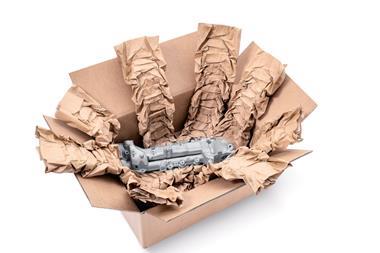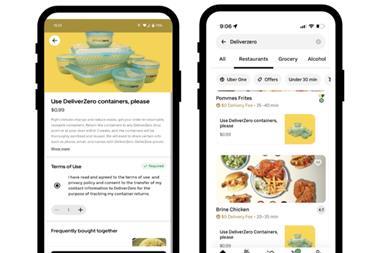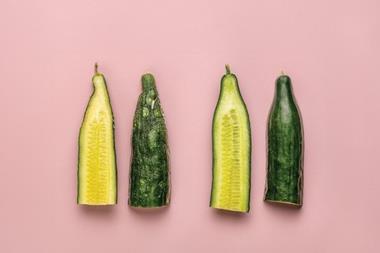
The Netherlands Institute for Sustainable Packaging’s (KIDV) Community of Practice (CoP) is a group that has set its sights on developing circular solutions for flexible packaging. Along with partners such as PepsiCo, Unilever, and Mars Wrigley, the group hopes to affect wide-ranging and lasting change.
We talked to the CoP to learn more about the current state of circularity in flexibles, the challenges the industry faces, and the actions it can take to meet these challenges.
Please can you introduce the CoP, explain its motivations, and let us know about its common goals?
Today’s plastic usage and waste damages our environment. We need to tackle this, and it is a shared responsibility of the industry to act. Producers and importers of packaged goods are actively working on solutions to improve the recycling of packaging, contributing to the development of a sustainable and viable market for secondary raw materials.
One of the keys to realising this pledge is to address the recyclability of flexible packaging such as films, foils, trays, bags, and pouches. So, the Netherlands Institute for Sustainable Packaging (KIDV) has initiated a Community of Practice. The participants are FrieslandCampina, Intersnack, Jacobs Douwe Egberts, Mars Wrigley, Pepsico, and Unilever; who represent a significant part of the buying power of flexible packaging in Europe.
The involved companies have a shared ambition to develop circular solutions for flexible packaging. The approach has been outlined in the ‘Roadmap for multilayer flexible packaging in a circular economy’ and accelerates the effective implementation of circular design guidelines in the Netherlands. In order to realise this, there is a need to connect relevant stakeholders in the value chain. They are invited to participate, for example via a workstream or the Advisory Committee.
For context then, in the view of your organisation, how circular is the flexible packaging value chain at the moment?
At the moment, many initiatives are being launched to make the value chain circular. There are elements that are already taking shape, but overall, much harmonisation is still required. It is difficult for companies to navigate all the subtle differences in definitions and contradictory requirements for packaging in the various European countries. It is also difficult to deal with sometimes misleading claims by companies or institutions that certain solutions are sustainable when they contradict prevailing ideas. It is clear that we are in transition and are currently on a bumpy road.
The CoP has identified certain challenges that the value chain faces in its mission to make itself more circular. Please could you break some of these down for us?
The main challenges are listed in an information map we published, called ‘Towards circular flexible plastic packaging in 2025’ that has been created together with the members of the CoP. With this map, we want to improve the dialogue between stakeholders on how to work towards a circular value chain together.
The most important barrier is the lack of incentives for improving circularity within the chain.
Companies that invest in packaging that meets the available circular design guidelines may not be able to communicate this to consumers in some cases, for example, because the existing infrastructure is not yet available to effectively recycle it. You can only claim recyclability once it actually happens.
For the infrastructure, it is difficult to arrive at conclusive business models to finance collection, sorting, and recycling, because the circular economy is not yet a profitable activity. For the time being, it still costs a lot of money to recycle materials of high quality. The recycled materials have to compete on the market with low raw material prices for virgin materials. Together with the unfamiliarity with the processing of recycled materials, this means that the demand for recycled materials lags behind, so that the chain is not sufficiently stimulated to develop further and faster.
The CoP is a coalition of willing people who join forces, which offers several benefits, such as more effective use of expertise and shared investments in research and innovation. A shared pre-competitive vision of the desired future accelerates the process for materials innovation and improves the quality of recycled flexible packaging.
A mutual understanding about the route towards circular flexible packaging should support decision-making and actions for both the public and private sector. We understand it will be a journey with trial-and-error. However, we think our struggle is our strength.
What conditions have to be met in order to address these challenges?
Flexible packages are a very efficient packaging solution because of the few materials used, strong barrier-properties, consumer convenience, and overall environmental impact. Life Cycle Assessments demonstrate a strong overall environmental performance of flexible packaging. However, flexible packaging is portrayed as an example of a linear economy solution.
After use, the packaging goes to a waste-to-energy plant, or a recycler turns it into a product that does not require a mono-material. Both a re-design of the packaging and improvements of collection, sorting, and recycling methods are needed to increase the circularity of flexible packaging.
The main challenge is to maintain the functionality of the multi-material flexible packaging while striving for mono-material recyclable solutions and eliminating the burden of litter. For producers, the alternative for unpopular flexible plastics is to switch to other packaging materials and formats. These alternative materials might be perceived as more sustainable, but often they are not.
The CoP also identifies actions that stakeholders can take to address these challenges – I wonder if you can introduce these to our readers?
We can no longer sit still and wait for all conditions to be perfect. We need all stakeholders to initiate the transition and look at the bigger picture. Look for ‘no regret’ steps, especially when it comes to using flexible packaging materials based on polyolefins, such as PE, PP, and blended polyolefins. What can you do to minimise material consumption and adapt your packaging process or use of packaging so that it is at least suitable for recycling? Ask how you can innovate, collaborate and commit to solving our biggest dilemmas.










